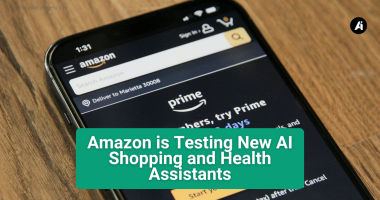Have you ever wondered what it’s like to navigate the world without sight? What if artificial intelligence (AI) could help you “see” with sound and touch instead of your eyes? That’s exactly what a team of Chinese researchers has been working on—and the results are both impressive and inspiring.
A new wearable AI system developed by scientists from several major universities in China, including Shanghai Jiao Tong University and the Shanghai Artificial Intelligence Laboratory, is designed to help people who are blind or visually impaired move around more confidently and independently.
Their study, recently published in Nature Machine Intelligence, showcases how this device uses a smart mix of technology—real-time video, sound, and even skin vibrations—to guide users safely through their surroundings.
Let’s break down how it works and why it could be a game-changer!
How Does the Wearable AI System Actually Work?
So, what’s in this futuristic device? The setup is pretty compact: it includes a small camera mounted between the user’s eyebrows, a local AI processor, bone conduction headphones, and super-thin sensors that wrap around the wrists like a second skin.
Here’s the cool part: the camera captures everything the user is “seeing” in real time. The AI processes the visual data on the spot—no need to send it to the cloud—and sends quick audio prompts to the headphones. And since they’re bone conduction headphones, users can still hear their surroundings clearly. No isolation, just guidance.
At the same time, the wrist sensors act as a second line of defense. If you’re getting too close to a wall, furniture, or any obstacle, the sensor on the corresponding wrist vibrates—just enough to nudge you in the right direction. It’s like a tap on the shoulder saying, “Hey, go the other way.”
Isn’t that smarter than flooding someone with long audio instructions?
Designed to Be Simple, Light, and Easy to Use
But here’s something that really stood out: the team focused heavily on making the system practical. According to lead researcher Gu Leilei, the goal wasn’t to overdo the tech—it was to keep things simple, comfortable, and intuitive.
“Lengthy audio descriptions can be tiring and overwhelming,” Gu told the South China Morning Post. “Our work tries to give just the key info in a way your brain can easily process.”
And it seems to work. The team tested the device with 20 visually impaired users in indoor settings. Most people figured it out in just 10 to 20 minutes. Pretty impressive, right?
Voice Commands and Smart Object Recognition
So how do users tell the AI where to go? It’s as easy as speaking. You just say your destination out loud, and the system finds a safe path and only alerts you when necessary.
Even more impressive, the AI has been trained to recognize 21 everyday objects—beds, chairs, doors, food items, and even people. It can do this from different angles and distances, which makes the experience a lot more natural. This list will grow over time, too.
And when users reach for something, like a cup on a table, the wrist sensors guide them with tiny vibrations. It’s like getting a gentle hint: “A little to the left… now forward… there you go.”
What’s Next? Taking It Outdoors
So far, all of this has been tested indoors—but what about walking on busy streets or navigating parks?
That’s the next step. The researchers plan to expand the system’s capabilities so it can work in unpredictable outdoor environments. Future updates might include real-time route adjustments, better object recognition, and GPS integration to help with street navigation and traffic awareness.
“This is just the beginning,” the researchers wrote in their paper. “We’re creating user-friendly visual aids that could genuinely improve lives.”
And they’re right. Imagine being able to walk confidently down the street, go grocery shopping, or visit a friend without needing constant human help. For millions of people living with vision loss, this technology could be life-changing.
Final Thoughts
So, could AI be the new set of eyes for the blind? It’s not science fiction anymore. With wearable systems like this, artificial intelligence is stepping into a deeply human role: helping people live with more freedom, confidence, and dignity.
What other ways could AI help improve accessibility in everyday life? Would you trust a device like this to guide your steps?
Let’s keep watching this space—it’s only getting smarter.






